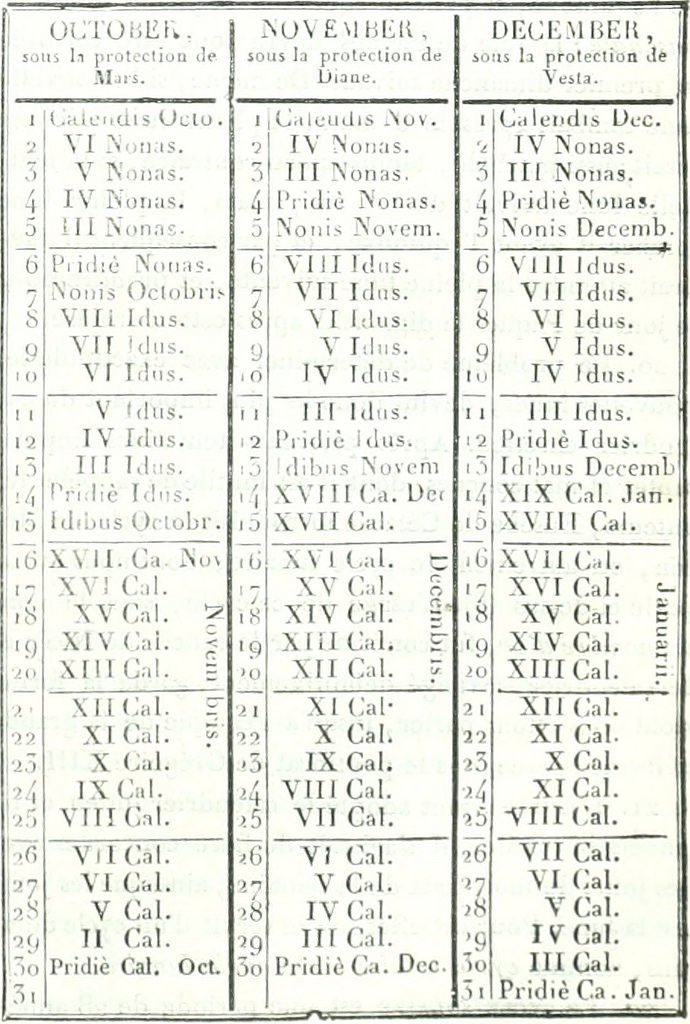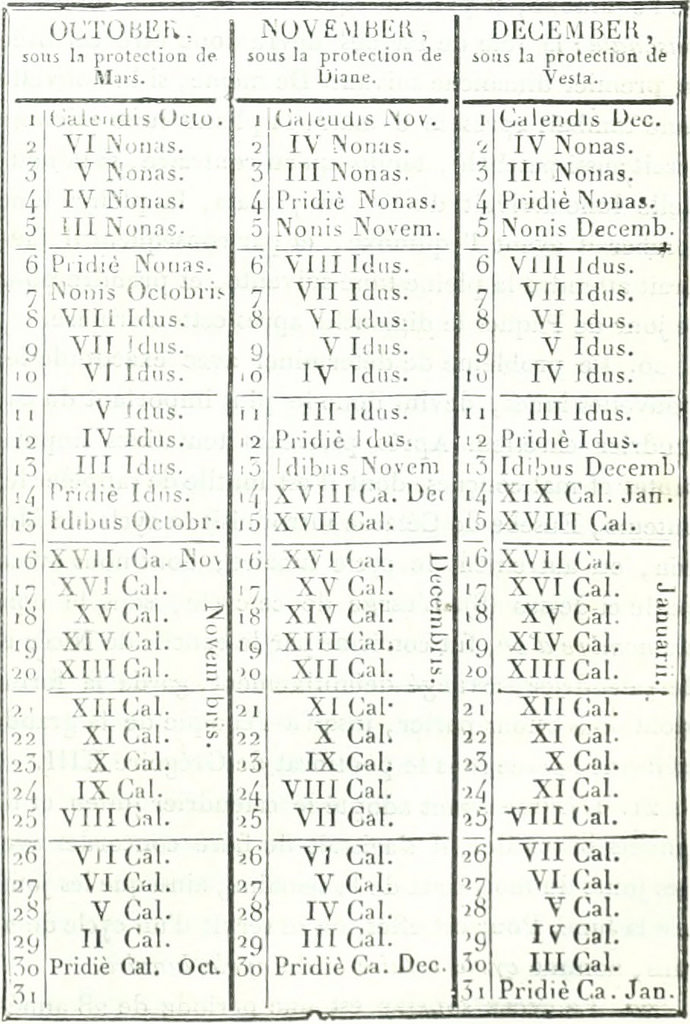Hi, as you probably know, a year is made up of 365 days. The latter being spread over 12 months, themselves spread over weeks. However, this setup wasn’t always like this. We will therefore see in this article how the calendar looked in Roman times. For that, I am going to present to you the different months, days… existing at this time and also the transformations which took place. Now let’s get to the heart of the matter and happy reading.
(One last thing, we will only talk about the Gregorian solar calendar here).

Calendar’s developments
In Ancient Rome, there were 4 different important phases / calendars:
Romulan
The first phase known as “Romulan” lasted during the reign of Romulus, under the Roman Monarchy. It is believed to have started with the founding of Rome in 753 BC until the death of the first Roman king in 716 BC. During this period, a year was composed of 10 months (Martius, Aprilis, Maius, Iunius, Quintilis, Sextilis, September, October, November, December {March, April, May, June, July, August, September, October, November, December}). And this for a duration of 304 days (the length of the months was similar to that of today except for August and December which were 30 days instead of 31 now).
Pompilian
The second so-called “Pompilian” phase lasted during the reign of Numa Pompilius in 715 BC until the reform of Julius Caesar in 46 BC. During this period, a year was composed of 12 months (Martius, Aprilis, Maius, Iunius, Quintilis, Sextilis, September, October, November, December, Ianuarius, Februarius {March, April, May, June, July, August, Septembre, October, November, December, January, February}) And this for a period of 355 days per year with a year of 385 days every 4 years. In a 355-day year, there were 28-day months (January and February), 29-day months (April, June, August, September, November, and December), and 31-day months (March, May, July, October). In a 385-day year, the months were the same length. Except for February which was then reduced to 29 days. And a 29-day “Mensis intercalaris” (intercalary month) was added.
Republican
The third phase is the Republican calendar, it began following the “Pompilian” phase and lasted until the reform of Julius Caesar in 46 BC. During this period, the number and distribution of days were almost similar to those of the “Pompilian” calendar. The only differences were a duration of 29 days for the month of January, a duration of 23 or 24 days for the month of February but only every 2 years. And this at the same time as the leap month and the latter was also 27 days instead of 29.
Julian
The fourth phase known as “Julian” lasted from 46 BC, following the reforms of Julius Caesar in the 16th century with the invention of the current Gregorian calendar. During this period, a year lasted 365 days and consisted of 12 months (Martius, Aprilis, Maius, Iunius, Quintilis, Sextilis, September, October, November, December, Ianuarius, Februarius {March, April, May, June, July, August, September, October, November, December, January, February}). The months here were similar to our current months. With February counting 28 days in a normal year and 29 in a leap year (every 4 years).
The year
Back then, a year started on January the 1st, as it does for us. However, this only came with the “Julian” calendar. Before, a year began on the first day of spring: March the 15th. Also, the beginning of the years count was not 0 as it is for us. Indeed, Jesus was not yet born, the reference date was the founding of Rome, therefore 753 BC. This means that for example Julius Caesar who gave his reform on the calendar in -46 gave it in reality in 707 AD. So as of this writing it is 2018, so it would be 2771. Of course, a year ended on December 31st.
The months
The months were at the time 10, 12 or 13 with the intercalary month and each had a more or less known origin. Here is a brief summary for each month:
January: its name “Ianuarius” comes from the God Janus, God of change, of choices, of transition… Which makes sense as the month of January is the month of the new year.
February: the name of this month: “Februarius” comes from the Latin “Februare”: to purify.
March: This month is named in honor of the God of War: Mars.
April: the name of this month, in Latin: “Aprilis”, coming from the verb “Aperire” meaning “to open”, was given to it in connection with the buds that open during this month. Also, it is in honor of the goddess Venus, Goddess of love.
May: the name of this month comes from the Goddess “Maia”, Goddess of fertility and spring. Also, in Latin “Maius” means “bigger” and therefore refers to the plants that grow.
June: the name of this month comes from the Goddess “Juno”, Goddess of fertility.
July: The name of this first month “Quintilis” will later become “Iulius” in honor of Julius Caesar, born on July the 12th or the 13th.
August: The name “Sextilis” of this month means “sixth” because it was originally the sixth month of the year. Subsequently, it became the eighth month of the year and its name took its origin from the Latin “Augustus” in honor of the first Roman emperor: Augustus.
September: The name of this month comes from the Latin “septem”. Meaning “seven” because it was originally the seventh month of the year.
October: The name of this month comes from the Latin “octo”. Meaning “eight” because it was originally the eighth month of the year.
November: The name of this month comes from the Latin “novem”. Meaning “nine” because it was originally the ninth month of the year.
December: The name of this month comes from the Latin “decem”. Meaning “ten” because it was originally the tenth month of the year.
(For the months of September, October, November and December, the ending “bre” comes from the expression “ad imbre.” Which means “after the snows” or from the Latin verb “ber” which means “to carry”.)
There you go, this article is now complete. Hope you liked it and discovered new things. Also, feel free to tell me in the comments space what topic you would like me to cover in a future article. Regarding this one, it will focus on “the 5 most important Roman historians”. I wish you all a very happy new year and see you next week !
Receive my free book Around the Roman Coin by clicking here




